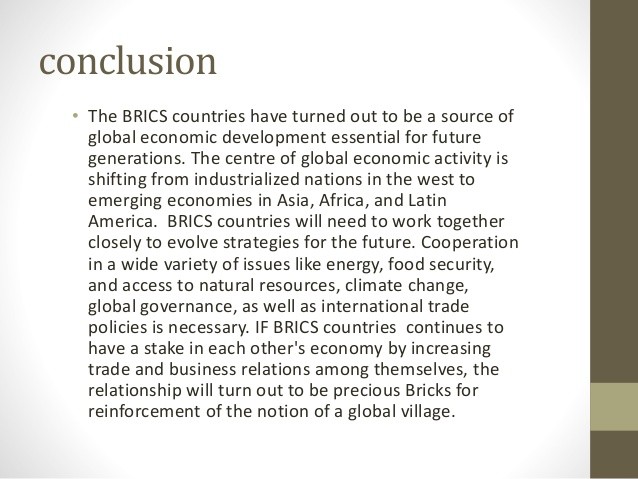BRIC s Analysi Economic Security
Post on: 16 Март, 2015 No Comment

Tags:
By +Peter Mindenhall — Friday 04 June 2010
BRIC’s is the acronym for the four countries that have been predicted to become the four most dominant countries economically by 2050. The countries are Brazil, Russia, India and China. The term was first actualised by Jim O’Neill, from Goldman Sachs who contributed to a report in 2001, the long term predictions were projected in a following report in 2003.
These countries combined account for more than a quarter of the worlds land area and more than 40% of the world’s population, so the potential for growth and over taking of existing dominant economies is a possibility.
There are several conditions stated in the report that the BRIC countries must meet in order for the predictions to be correct.
- Sound macroeconomic policies and stable macroeconomic background – Low inflation, supportive government policy, sound public finances and well managed exchange rate.
- Strong and stable political institutions – Political uncertainty and instability discourages investment and damages growth.
- Openness – Openness to trade and direct foreign investment has been an important part of successful development.
- Education – Higher levels of education are generally helpful in contributing to more rapid growth and catch up.

The BRIC countries leaders joined to form a summit in June 2009 and met again on April 16 of this year. The leaders discussed the current economic situation and how they can work together to improve it. A term that was originally coined in economic terminology has evolved to become a political entity, which was not expected by the authors of the report or the economic world as a whole.
Contrary to popular belief, the aim of the report was not to provide a guide for investors on where they should put their money, but more an exercise by Goldman Sachs in understanding investment trends. The term BRIC’s however has been used frequently in the marketing of investments such as property or stocks.
Projections of this sort rarely materialise due to unforeseen circumstances and unquantifiable variables. which is perhaps why in Goldmans own report, the word assume (and versions of it) appear some 77 times in their 24 page report. (3.2 times on every page of the document!)
We will be looking closely at the reality of such long term projections for each country in a series of articles over the coming week. How each country actually fairs in our opinion with regards to the key economic factors and their validity with respect to the investment property world, and the viability of them as property investment destinations.














